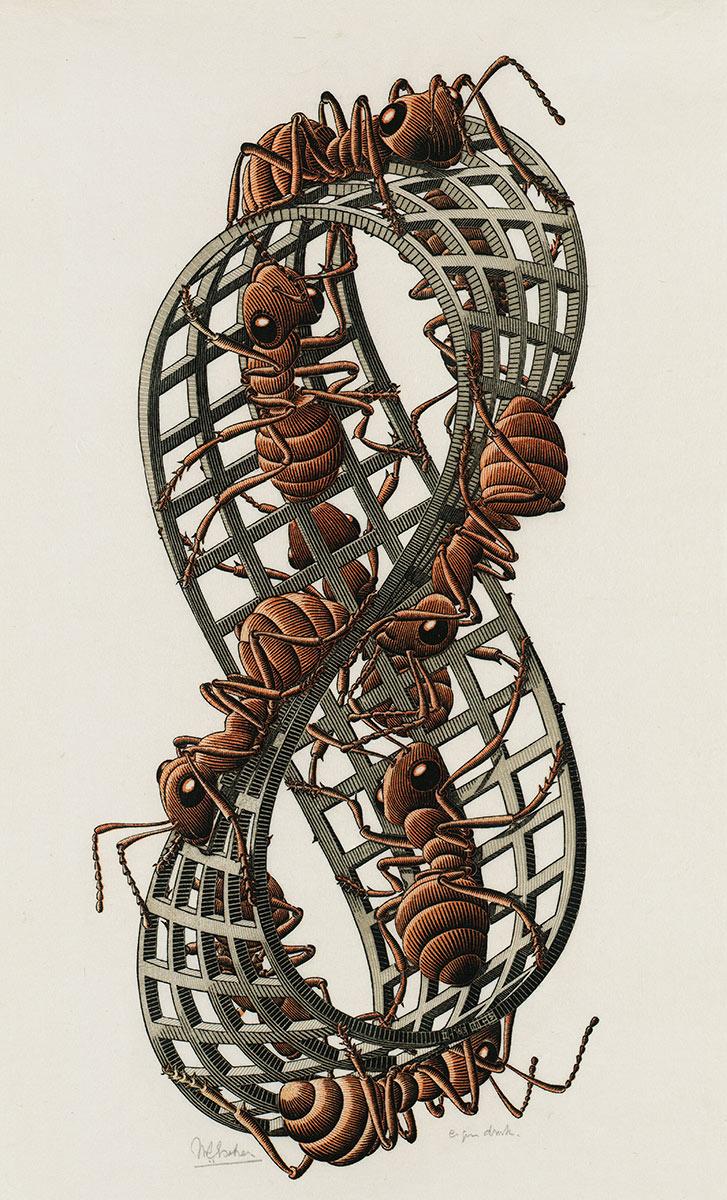
Möbius Strip II
Escher made a number of prints based on the concept of the Möbius strip, discovered by the German mathematician and astronomer Ferdinand Möbius (1790-1868). Escher already cautiously explored it in his 1946 woodcut Horseman and his 1956 wood engraving Swans. Möbius Strip I, made in 1961, was his first print to focus on the concept, followed by Möbius Strip II in 1963. A Möbius strip is a spatial form that has only one surface and one edge. There is no outer edge or inner edge. It tied in perfectly with the themes that interested Escher, appearing similar to impossible prints like Concave and Convex, Relativity, Belvedere and Waterfall, except for the fact that the Möbius strip is actually possible. It only appears impossible. For Escher, however, it was not enough simply to represent the figure as attractively as possible. He challenged both himself and the viewer by making the strip partially see-through, and depicting nine ants walking along it as if on an endless treadmill.